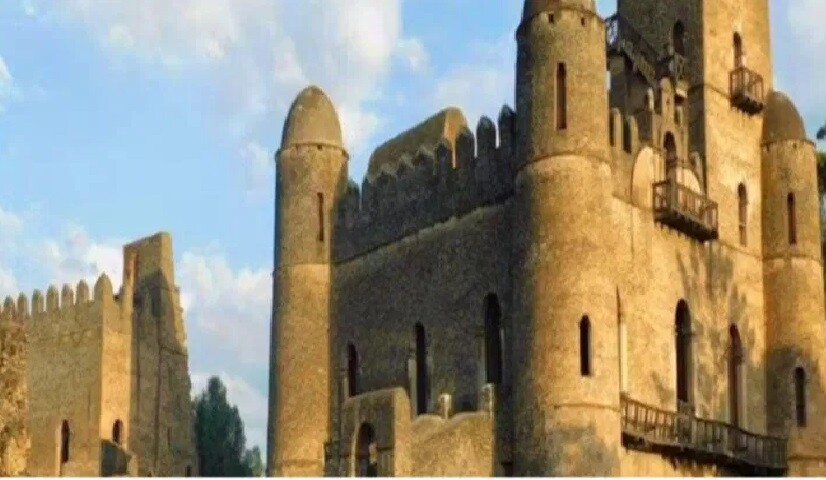
 Overview
Overview
Historical Significance: The Fasiledes Gondar Palace served as the residence of Ethiopian emperors from the 17th to the 19th centuries. Emperor Fasilides initiated its construction around 1636, and it became the centerpiece of the Ethiopian empire’s administrative and royal life.
Architectural Style: The palace complex is renowned for its unique blend of architectural styles. It combines elements of traditional Ethiopian architecture with influences from Portuguese, Indian, and Ottoman designs, reflecting the diverse cultural exchanges of the period. The structures include grand castles, churches, and baths, all set within a fortified enclosure.
 Key Features:
Key Features:
- Fasilides’ Castle: The central structure, often referred to as Fasilides’ Castle, is a three-story building with a striking resemblance to medieval European castles. It features tall, narrow windows and a crenellated roof, symbolizing both defense and opulence.
- The Bath of Fasilides: This large rectangular pool is used during the Timkat festival (Epiphany), when thousands of pilgrims gather for a ceremonial bath. The pool, surrounded by high walls, showcases the complex’s sophisticated water management system.
- The Debre Berhan Selassie Church: Located within the palace grounds, this church is famous for its stunning ceiling paintings depicting angels and biblical scenes. It is a prime example of Ethiopian ecclesiastical art and architecture.
- The Royal Enclosure: The entire complex is enclosed by a high wall with several gates, creating a fortified area that once housed the emperor’s family, courtiers, and administrative offices.
 Cultural and Historical Context
Cultural and Historical Context
Ethiopian Empire: The Gonder period, during which the palace was constructed, was a time of relative stability and prosperity in Ethiopia. The empire enjoyed flourishing trade and diplomatic relations with various European nations, contributing to the diverse architectural styles seen in the palace.
Preservation and Tourism: Today, the Fasiledes Gondar Palace is a UNESCO World Heritage Site, recognized for its historical and cultural significance. It attracts visitors from around the world who come to marvel at its architectural beauty and learn about Ethiopia’s royal history. Restoration efforts have helped preserve the site, ensuring that future generations can continue to explore and appreciate this remarkable piece of Ethiopia’s heritage.

Conclusion
The Fasiledes Gondar Palace stands as a remarkable symbol of Ethiopia’s rich history and cultural fusion. Its architecture, historical significance, and ongoing role in cultural celebrations make it a must-visit destination for anyone interested in exploring the royal legacy of Ethiopia.
